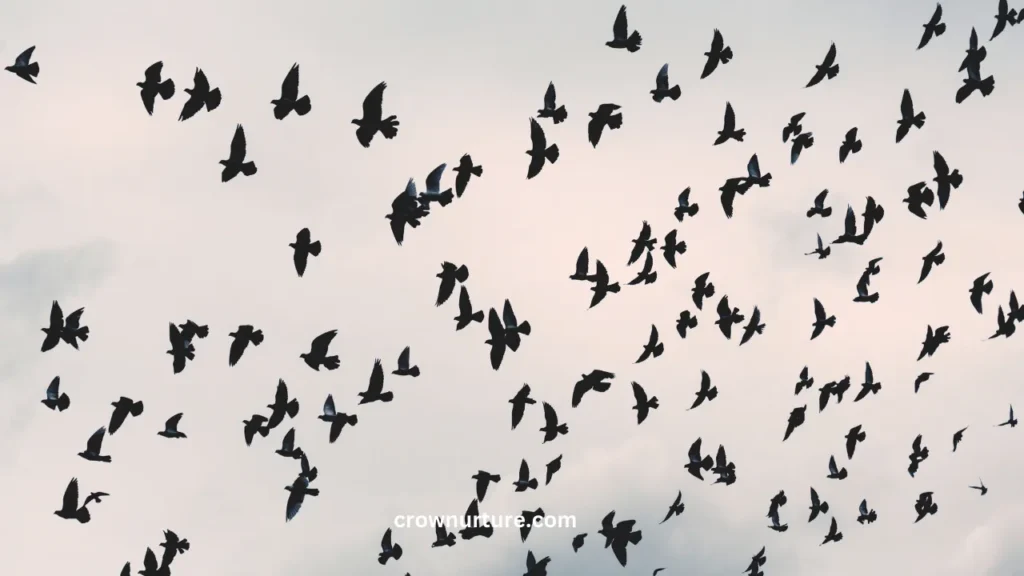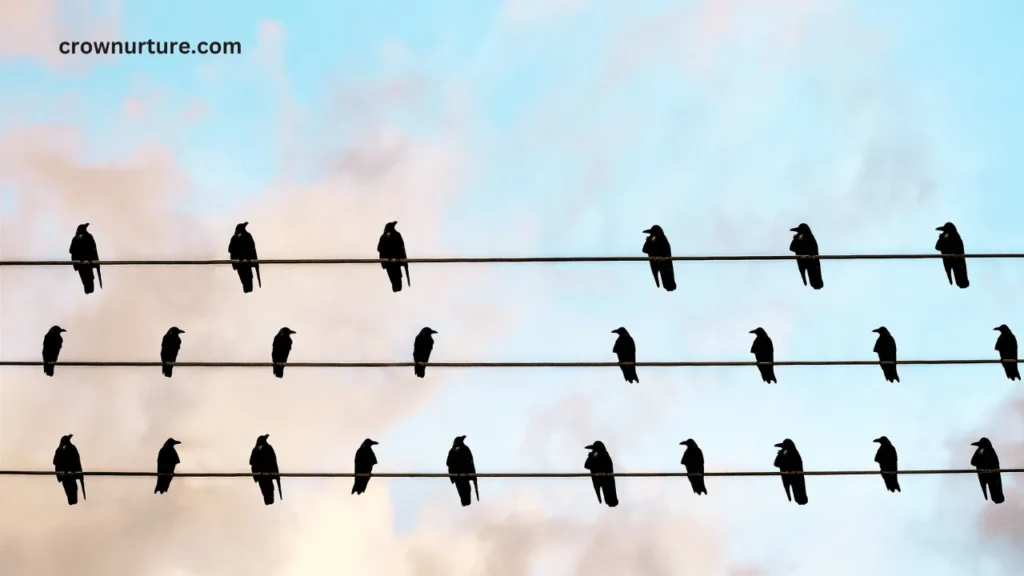On a crisp winter morning, you might spot a flock of crows gathering noisily in the treetops or soaring in a tight formation across the sky. These birds are not just intelligent; their behaviors are full of mystery and complexity.
Among the most intriguing questions about them is whether crows migrate during the winter. The answer isn’t straightforward. Unlike many other bird species, crows exhibit partial migration.
Some populations migrate, especially those in colder northern regions, while others remain in their home territory throughout the year. This fascinating variability reflects their adaptability and resourcefulness in responding to environmental conditions.
Understanding why some crows migrate and others stay behind offers a glimpse into their survival strategies and ecological roles. In this blog, we will uncover the factors influencing crow migration, the patterns they follow, and the environmental challenges they face.
Whether you’re a bird enthusiast or just curious about the natural world, this is a journey worth exploring.

Contents
Crow Migration Patterns: A Complex Issue
Crow migration is a partial phenomenon, meaning not all members of a population migrate. Some crows remain non-migratory, especially in areas where food remains available throughout the year.
Others, particularly those in northern climates, migrate to warmer regions with less severe winters. Food availability is the primary driver of crow migration.
In colder regions, where snow and ice can cover food sources, crows migrate to areas where they can find sustenance. On the other hand, crows in urban settings often remain stationary because humans provide a consistent supply of food.
Climate and competition also play significant roles. Harsh weather conditions, such as heavy snowfall or freezing temperatures, push some crows to migrate. Competition for resources with other birds, or even among themselves, can also influence their behavior.
Extent of Crow Migration
Crows are not known for the long migrations of other birds. Instead, many undertake short-distance movements, traveling only as far as necessary to find food and shelter. These movements may be within the same region but shift slightly to better conditions.
In some cases, northern crow populations migrate longer distances, traveling hundreds of miles to escape extreme winters. For instance, American crows in Canada often migrate southward during winter.
Roosting behavior is another important aspect of their winter habits. During colder months, crows gather in large communal roosts that can host thousands of birds. These gatherings offer warmth, protection, and social interaction, providing an alternative strategy to migration.

Studying Crow Migration
Tracking crow migration is challenging due to their intelligence and adaptability. Unlike other birds that follow predictable routes, crows adjust their movements based on local conditions. This makes studying their migration patterns a complex task.
Researchers use various tools, such as bird banding, radio telemetry, and satellite tracking, to monitor crow movements. These methods have revealed valuable insights into how far and why they migrate.
Citizen science projects have also played a crucial role. Birdwatchers and enthusiasts contribute by reporting crow sightings and behavior, adding valuable data to ongoing research.
The Impact of Environmental Factors
Crow migration is deeply influenced by environmental factors. For example, climate change may alter their migration patterns by shifting the availability of food and suitable habitats. Warmer winters could reduce the need for migration in some regions, while harsher conditions might force others to adapt or relocate.
Habitat loss and fragmentation also threaten crow populations. Urbanization and deforestation reduce the availability of food and roosting sites, disrupting their natural behaviors.
Human activities, such as agriculture and waste management, can have both positive and negative effects. While these provide additional food sources, they can also create dependencies that alter natural migration patterns.
Conclusion
Crows are a testament to nature’s adaptability and resilience. Their migration patterns are not a simple yes or no answer but a complex interplay of food availability, climate, competition, and environmental pressures. While some migrate to escape harsh winters, others remain in their territories, relying on their ingenuity to survive.
Understanding these behaviors is vital for appreciating the ecological role of crows. As climate change and habitat loss continue to impact wildlife, studying crows can provide insights into how species adapt to a changing world.
Next time you see a flock of crows during winter, pause and consider their story. Whether they’ve traveled miles to escape the cold or stayed put to brave the season, they exemplify the beauty and complexity of the natural world.
FAQs
1. Do all crows migrate during the winter?
No, not all crows migrate. Some populations migrate, while others remain in their territories year-round.
2. Why do some crows migrate and others don’t?
Migration depends on factors like food availability, climate, and competition. Urban crows often don’t migrate due to consistent food supplies.
3. How far do crows migrate?
Crows typically migrate short distances, but northern populations may travel hundreds of miles to avoid harsh winters.
4. What is partial migration?
Partial migration means that only some individuals in a population migrate, while others remain non-migratory.
5. How do researchers study crow migration?
Researchers use methods like bird banding, radio telemetry, satellite tracking, and citizen science to study crow movements.
6. Do crows migrate in large flocks?
Yes, during winter, crows often form large communal roosts, which can include thousands of birds.








